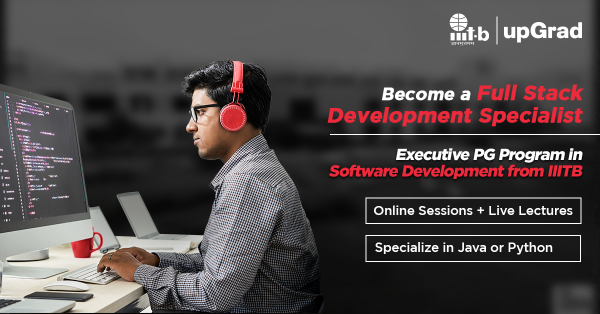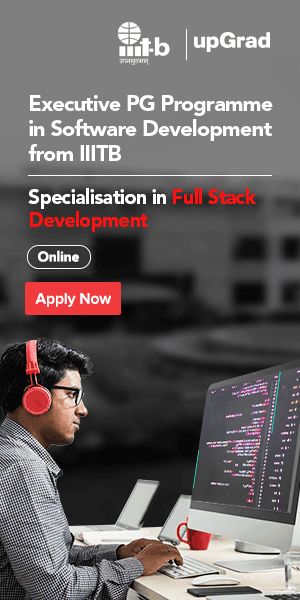Adobe Inc. is a global computer software company known for its range of multimedia software products, simplifying creative pursuits for millions of people. Its major works like Photoshop, Premier Pro, and Illustrator continue to be the most widely used creative cloud products among digital innovators. Adobe may provide the most amazing design tools to filmmakers, publishers, and digital artists, but it’s also famous for its workplace and work culture.
This US-based company is ranked #2 in the list of the world’s most admired software companies. In addition, they were also able to generate a lot of revenue even during the pandemic. Adobe provides a number of employee benefits and follows certain practices to ensure high employee happiness. In this blog, we’ll discuss the most relevant and important interview questions and answers that will come in handy during an interview at Adobe.
Questions and Answers from an Adobe Interview
Here is a list of the most relevant questions and answers that you might encounter during an Adobe interview. Going through these questions will help you prepare for the adobe interview process.
1. What is “pointer addition”?
When the value of a pointer increases, it is done in a way that the new pointer value matches the size of the data type. For example, if the value of an integer pointer of 1000 increases, it will increase by the size of the particular integer in question. This will increase the new address to 1002.
2. What’s the difference between a package and a bundle?
A package works as a zip file containing data in the file-system serialization format (also known as “vault serialization”). This shows the database file content in a simplified manner which is easy to edit and transfer. Packages also include data related to content. On the other hand, a bundle is a tight, loadable assembly of jars, configuration settings, and classes. Additionally, they are also a practice of providing multiple features together.
3. What is “deep copy?”
When we copy a deep copy of a linked list, we make a new node for every original node in the linked list instead of simply duplicating them. This is what deep copy means. A list is made that is similar to the original Linked list. However, to start this process, you will need a random pointer value.
4. When does the stack overflow?
Stack overflow can occur even when the memory is deallocated, and the space is freed up. This happens when most of the space size of the stack is being used, and there is no more memory left for the variables in the program to be saved. Therefore allocating more memory than what’s available will result in the crashing down of the program. Stack overflow can be exhibited using the following examples.
- Usage of indefinitely periodic processes.
- Usage of a stack variable with a huge size C.
- Recursion usage that goes back far back in time.
5. Explain the life cycle of the OSGi bundle.
Step 1: Install the OSGi bundle to initiate the process.
Step 2: Most Java classes will be available for the OSGi bundle after installation. During this step, the bundle is ready to start.
Step 3: The OSGi bundle starts and is fully activated. You will have to use the Bundle Activator start method to do this.
Step 4: The bundle is then stopped. The BundleActivator,.stop code method is applied to stop the method.
Step 5: The OSGi bundle is uninstalled and cannot be transferred to another state.
6. What are some of the differences between CQ5.4 and CQ5.5?
- CQ 5.4 was established on a CQSE container with many applications, such as for the CRX content repository and the OSGi container, which itself accommodated Sling and AEM. These web applications, like AEM root, handle most memory processing requests.
- On the other hand, in CQ 5.5, the OSGi container’s placement is at the root. The OSGi HTTP service, powered by Sling, processes memory allocation requests.
- When CQ5.5 was developed, AEM’s quickstart jar installation method became outdated and failed to support multiple web applications.
- However, the war version of CQ5,4 was designed in a server so that additional web apps can also run along with AEM.
- CQ5.5 features Undo and Redo shortcut functions. These were not available earlier.
- Additionally, CQ 5.5 has collaborated with specific hybrid software to enable a streamlined eCommerce experience.
- CQ 5.5 has allowed authors and writers to work on mobile apps.
- CQ5.5 features three new connectors in Adobe products – Search& Promote, Creative Suite, and Scene7.
7. Explain replication and the steps involved in this process?
Replication refers to activating the Author Page Instance to the Process Instance. Let’s take a look at the various steps included in this process.
Step 1: When an author or the writer requests specific content manually. Automatic triggers are also pre-configured for publishing online.
Step 2: These requests are then transferred to the relevant replication agent; various apps and platforms feature different agents for taking such actions
Step 3: After the replication agent puts the content through the packaging process, it is added to the replication queue.
Step 4: The content is then transferred to the publishing platform using the pre-configured settings and protocols. Typically, this protocol is HTTP.
Step 5: The publishing environment servlet gets the request and publishes the desired content. The default replication servlet is https://localhost:4503/bin/receive.
8. What are the differences between phrases and par base?
Phrases (Paragraph System)
- The paragraph system is a part of the compound that enables authors and writers to add different types of add-ons and components to a webpage.
- Every parsys type is denoted as a component. Therefore, it’s a component in itself that includes other parsys elements.
Par Base:
- This par base enables these components to integrate different attributes from sub-classes in programming languages such as Java, C++, and others.
- When you open the libs/foundation/text node while using the CRX explorer, ensure it has a proper name. Examples of such names include Sling:resourceSuperType, which will refer to the par base factor.
Par base:
- The par base allows components to obtain attributes relating to varying components, which can be compared to subclasses in languages such as Java, C++, etc.
- When you open the /libs/foundation/components/text node in the CRX Explorer, it contains a property named Sling:resourceSuperType, which references the par base component.
- The par base here defines tree scripts that render titles, images, etc., enabling script utilisation for all components subclassed.
9. What’s the difference between language and live copy?
Live Copy: This refers to the process of coping with an existing site or a structure and coming up with a new copy. A live copy can be customised using the console tool.
Language copy: Language copy refers to creating a site using a language tool. In simpler terms, Language copy enables web developers to create a site suited for multiple languages.
10. What technology stacks are used by CQ5?
CQ5 uses the following technology stacks:
- OSGi: also known as Apache Felix, OSGi is a structure for extensive app development. This is usually done using the language Java. Each module can be individually stopped and started. OSGi container generally features an integration guide for the OSGi structure.
- Apache Sling: A REST-enabled framework that allows access to JCR using the HTTP protocol. In addition, apache sling can measure the requested URL to the respective node in JCR.
- JCR: JCR is a Java component used to acquire a content database. In addition, JCR 2.0 and CQ5 have their integration process of JCR, which is known as CRX.
Excelling in Full Stack software development- how to do it?
Additional certification can enhance your chances of getting hired. Get one step closer to your dream Adobe job by availing upGrad’s Full Stack Development Bootcamp.
This extensive course contains all the fundamental and advanced concepts of stack development and features the most trendy and relevant skills in the data science industry. In addition, this course also has 20+ projects and case studies you can use to understand the present sector. Such a platform can help you prepare for your dream job and even the Adobe interview process.
Conclusion
Adobe is one of the best and most desirable multinational companies for employees. The adobe interview experience can be hectic and requires determination and constant effort. However, once you get through the Adobe interview questions, Adobe will extend all possible benefits as their corporate responsibility to ensure its people-based values are met.
































![Top 14 Technical Courses to Get a Job in IT Field in India [2024]](/__khugblog-next/image/?url=https%3A%2F%2Fd14b9ctw0m6fid.cloudfront.net%2Fugblog%2Fwp-content%2Fuploads%2F2020%2F09%2F911-Banner.png&w=3840&q=75)
![25 Best Django Project Ideas & Topics For Beginners [2024]](/__khugblog-next/image/?url=https%3A%2F%2Fd14b9ctw0m6fid.cloudfront.net%2Fhttps%3A%2F%2Fec2-3-7-241-34.ap-south-1.compute.amazonaws.com%2Fblog%2Fwp-content%2Fuploads%2F2020%2F04%2F281.png&w=3840&q=75)
![Must Read 50 OOPs Interview Questions & Answers For Freshers & Experienced [2024]](/__khugblog-next/image/?url=https%3A%2F%2Fd14b9ctw0m6fid.cloudfront.net%2Fugblog%2Fwp-content%2Fuploads%2F2020%2F08%2F952-OOPS-Interview-Questions.png&w=3840&q=75)

![33 Best Computer Science Project Ideas & Topics For Beginners [Latest 2024]](/__khugblog-next/image/?url=https%3A%2F%2Fd14b9ctw0m6fid.cloudfront.net%2Fugblog%2Fwp-content%2Fuploads%2F2020%2F09%2F909-Banner.png&w=3840&q=75)
![Top 58 Coding Interview Questions & Answers 2024 [For Freshers & Experienced]](/__khugblog-next/image/?url=https%3A%2F%2Fd14b9ctw0m6fid.cloudfront.net%2Fugblog%2Fwp-content%2Fuploads%2F2021%2F08%2F2239.png&w=3840&q=75)